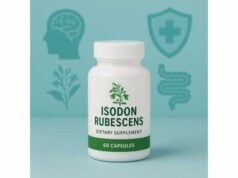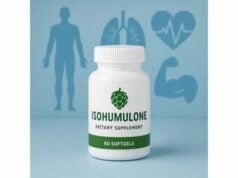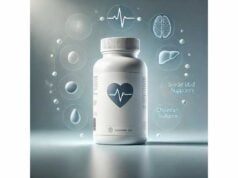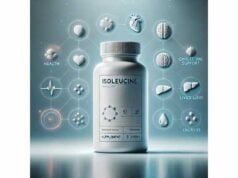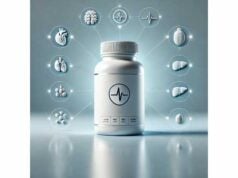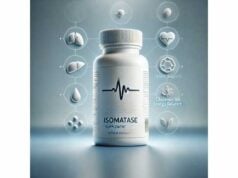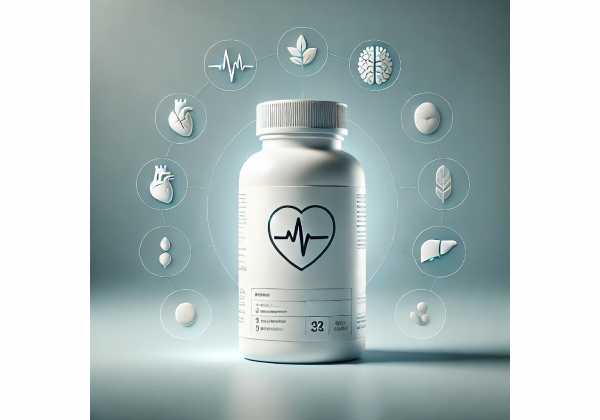
Isorhamnetin is a methylated flavonol—chemically, 3′-O-methylquercetin—found in sea buckthorn, onions, Ginkgo leaves, and cactus pear. As a small plant polyphenol, it shows antioxidant and anti-inflammatory activity, plus early signals for metabolic, vascular, and liver support. Because methylation can boost stability and tissue exposure compared with its parent quercetin, isorhamnetin is often described as a “refined” flavonoid—less reactive, more bioavailable, and active at lower concentrations in experimental systems. You will see it in food-based extracts (especially sea buckthorn) and as a stand-alone ingredient in some supplements. This guide translates the science into practical steps: what isorhamnetin is, how it works, where it may help, how to try it safely, how bioavailability and formulation change results, and who should avoid it. The emphasis is people-first and realistic: incremental support over weeks, paired with lifestyle and medical care where needed.
Quick Overview
- Supports healthier inflammatory and oxidative-stress balance; early evidence suggests small benefits for glucose and lipids when part of sea buckthorn flavonols.
- Methylation improves stability and may raise exposure versus quercetin; taking with meals and smart formulations can further aid absorption.
- No official human dose; a cautious supplemental range is 50–150 mg/day, or an exploratory 0.2–0.5 mg/kg/day, taken with food for 8–12 weeks.
- Avoid if pregnant or breastfeeding, in children, or when using narrow-therapeutic-index drugs without clinician oversight.
- Safety caveat: possible interactions via metabolic enzymes and antiplatelet/anticoagulant regimens; space from medications and involve your prescriber.
Table of Contents
- What is isorhamnetin and how does it work?
- What benefits are plausible now?
- How to take isorhamnetin: dosage and timing
- Bioavailability and formulation factors
- Safety, side effects, and who should avoid it
- Evidence: what we know so far
What is isorhamnetin and how does it work?
Isorhamnetin is a naturally occurring flavonol that your body can also form by methylating quercetin. That single methyl group changes how the molecule travels and acts: methylated flavonoids are typically less reactive (so they persist longer), show improved membrane crossing, and sometimes achieve higher tissue levels than their unmethylated parents. In foods, isorhamnetin appears free or attached to sugars (glycosides); sea buckthorn berries are especially rich sources.
Mechanistically, isorhamnetin is a signaling modulator more than a blunt antioxidant. In cell and animal models it:
- Activates endogenous antioxidant defenses. Rather than just “soaking up” oxidants, it nudges stress-response hubs (for example, Nrf2-linked programs) that upregulate enzymes such as heme oxygenase-1 and glutathione-related systems.
- Tones down inflammatory cascades. Isorhamnetin can dampen NF-κB and MAPK signaling, leading to lower levels of cytokines and enzymes that perpetuate tissue damage.
- Supports metabolic signaling. At low, physiologic concentrations, it promotes glucose uptake via GLUT4 translocation in muscle cells and influences lipid handling pathways in liver and adipose tissue.
- Protects vascular endothelium. By improving nitric-oxide bioavailability and curbing oxidative stress, it helps maintain the flexible, anti-inflammatory state of blood vessels in preclinical work.
- Shows organ-specific protection. Animal studies point to cardioprotection under toxic stress, hepatoprotective activity in fatty-liver contexts, and improved recovery in models of injury—effects that all map back to redox and inflammatory control.
Because most circulating isorhamnetin is conjugated (glucuronidated/sulfated), apparent plasma levels understate on-site action: conjugates can be deconjugated at inflamed tissues, locally releasing active aglycone. This “ship-and-unbox” pattern is a common reason small oral doses can yield outsized local effects in polyphenol biology.
In daily life, think of isorhamnetin as a steadying influence. It does not replace medicines, but it can help your internal balance tilt toward less inflammatory noise and better metabolic tone—especially when paired with sleep, movement, and a plant-forward diet.
What benefits are plausible now?
Human evidence for isolated isorhamnetin is still limited. However, several lines of research—from food-based trials with sea buckthorn flavonols to focused animal and mechanistic studies—inform realistic expectations.
1) Glucose control and post-meal balance.
Sea buckthorn interventions (a major source of isorhamnetin, quercetin, and kaempferol) have shown improved glycemic responses in at-risk adults in randomized crossover settings. In parallel, laboratory work demonstrates that nanomolar isorhamnetin promotes GLUT4 translocation and glucose uptake in muscle cells. For everyday use, that suggests a modest nudge toward better post-meal control when isorhamnetin is part of a broader routine that includes protein, fiber, and walking after meals.
2) Lipids and vascular support.
Meta-analyses of sea buckthorn products report small improvements in triglycerides and cholesterol, particularly in people with less healthy baselines. Observational work links higher isorhamnetin intake with lower blood pressure in coronary disease cohorts. These are population- and food-matrix signals, not prescriptions—but they point in the same direction as preclinical results: calmer vascular inflammation and more favorable lipid handling.
3) Liver and cardioprotection under stress.
In animal models, isorhamnetin reduces oxidative damage and inflammatory signaling in the heart and liver, and can mitigate drug-induced cardiotoxicity. That matters because cardiometabolic disease is driven by cumulative “micro-hits” to mitochondria, endothelium, and hepatocytes. A compound that quiets those hits may support long-term resilience, even if short-term changes feel subtle.
4) Weight-management context.
A growing bench-to-animal literature describes reduced adipogenesis at micromolar concentrations, improved insulin signaling, and shifts in lipid metabolism (for example, lower de novo lipogenesis) with isorhamnetin and its glycosides. In humans, use it only as an adjunct to diet quality, resistance training, sleep, and stress management. Expect small, compounding gains rather than dramatic weight loss.
5) Antioxidant and skin resilience.
Because it upregulates endogenous defenses, isorhamnetin shows potential to help skin and connective tissue tolerate environmental stressors. Oral use for appearance outcomes is still exploratory; sunscreen, shade, and nutrition remain the priorities.
What not to expect.
Isorhamnetin is not a stand-alone therapy for diabetes, dyslipidemia, hypertension, or fatty liver. Claims of broad anticancer efficacy belong to the lab, not the clinic. In real life, benefits—when they occur—are incremental and depend on the quality of your overall routine.
How to judge if it helps you.
Pick measures that move slowly but meaningfully: fasting triglycerides and non-HDL cholesterol; a standardized two-hour post-meal glucose check; waist circumference; or a short symptom score for energy and recovery. Compare baseline with 8–12 weeks after consistent use.
How to take isorhamnetin: dosage and timing
There is no official therapeutic dose for isorhamnetin. Supplements vary, and many human studies employ food matrices (like sea buckthorn) rather than the isolated compound. With that in mind, here is a cautious, evidence-aware framework:
Suggested adult trial range
- Start at 50 mg/day of isorhamnetin from a standardized supplement.
- If well tolerated and you have clear goals (e.g., post-meal glucose, triglycerides), titrate to 100–150 mg/day after 2–4 weeks.
- A body-weight method works too: 0.2–0.5 mg/kg/day (about 15–35 mg for 70 kg) is a conservative exploratory band rooted in animal-to-human scaling from metabolic studies.
- Divide doses with breakfast and dinner if you are sensitive or prone to reflux.
Timing and food
- Take with a mixed meal that includes some fat to support absorption and reduce stomach upset.
- Consistency matters; daily intake is more informative than sporadic use.
- For post-meal goals, align one dose with the meal you want to smooth (often the largest meal).
How long before reassessment?
- Allow 8–12 weeks to judge changes in fasting labs and post-meal metrics. If there is no measurable benefit—or if side effects appear—discontinue rather than escalating indefinitely.
Smart stacking (keep it simple)
- Post-meal glucose: pair with soluble fiber at meals and a 10–15 minute walk afterward.
- Lipids: combine with diet focused on unsaturated fats, viscous fiber (oats, barley, psyllium), and resistance training.
- Avoid stacking multiple flavonoid megadoses; more is not necessarily better and can complicate interactions.
Choosing a product
- Look for explicit isorhamnetin content (mg per serving), not just “sea buckthorn flavonoids.”
- Prefer brands providing third-party Certificates of Analysis (identity, potency, heavy metals, microbes).
- If using a sea buckthorn extract for a food-first approach, choose products that disclose flavonol standardization and follow label directions.
When food might be enough
- Diets rich in legumes, berries, herbs/spices, tea, cocoa, and sea buckthorn products already deliver diverse polyphenols. If you eat this way consistently, you may not see extra benefit from an isolated isorhamnetin supplement.
Bioavailability and formulation factors
Two people can swallow the same labeled milligrams and experience different results. The reasons are mechanistic and practical:
1) Methylation helps exposure.
Relative to quercetin, methylated flavonols like isorhamnetin often show higher oral exposure in animals and improved cellular uptake. The methyl group reduces rapid metabolism and can promote membrane passage—one reason low, physiologic concentrations still move glucose transporters in muscle cells.
2) Conjugation is a feature, not a flaw.
After absorption, isorhamnetin is rapidly conjugated (glucuronides/sulfates). These forms circulate safely and can be deconjugated at inflamed or stressed tissues, locally regenerating active aglycone where it is needed. This on-site “unboxing” helps explain why modest oral doses can matter even when plasma aglycone looks low.
3) Formulation can multiply uptake.
Co-formulants that improve solubility and permeability—such as phytic acid in sea buckthorn flavonol blends—have raised isorhamnetin absorption in animal pharmacokinetic work. Delivery systems (microencapsulation, dispersion in oils) can also increase peak levels and total exposure. Two products with identical milligrams can behave very differently.
4) Food timing and the microbiome
Taking isorhamnetin with meals (and some fat) improves absorption and comfort. A fiber-rich, diverse diet supports a microbiome that processes polyphenols more predictably, which stabilizes responses. Recent animal work also suggests downstream benefits may be partly microbiome-mediated—another reason to prioritize dietary pattern alongside supplementation.
5) Tissue targets and kinetics
Experimental models show organ protection where oxidative and inflammatory stress run high—liver, vasculature, and heart—consistent with a compound that circulates as conjugates and activates stress-response pathways in those tissues.
Practical bioavailability tips
- Take with food containing 10–20 g of fat (e.g., yogurt with nuts, eggs with olive oil, salmon salad).
- Split doses if you notice reflux or queasiness.
- If you switch brands and your experience changes at the same dose, assume formulation is the reason.
- Do not pair with alcohol as a “delivery method.”
Safety, side effects, and who should avoid it
Isorhamnetin has a favorable safety signal in preclinical work and food-based studies, but robust long-term human data for the isolated compound are limited. A careful plan minimizes risk.
Common, usually mild effects
- Digestive: nausea, fullness, or loose stools when taken without food.
- Headache or light fatigue: uncommon; often resolves by lowering the dose or splitting with meals.
- Allergy: rare with isolated molecules, but possible with complex plant extracts. Stop and seek care if you notice hives, wheeze, or swelling.
Medication and condition cautions
- Antiplatelets/anticoagulants: Many flavonoids have mild antiplatelet effects in vitro; discuss with your prescriber if you use warfarin or direct oral anticoagulants.
- Metabolic enzyme interactions: Polyphenols can modulate drug-metabolizing enzymes or transporters. If you take narrow-therapeutic-index drugs (e.g., some antiarrhythmics, transplant meds, oncology agents), avoid self-experimentation.
- Peri-procedure: Hold non-essential supplements 1–2 weeks before scheduled procedures unless your care team advises otherwise.
Who should avoid isorhamnetin (unless medically supervised)
- Pregnant or breastfeeding individuals.
- Children and adolescents.
- People with active liver disease or unexplained liver-test abnormalities.
- Anyone on complex polypharmacy or drugs with tight dosing windows.
How to use it safely
- Define your goal (e.g., smoother post-meal glucose, lower triglycerides).
- Start low (50 mg/day) with food; consider 0.2–0.5 mg/kg/day as an exploratory band.
- Track for 8–12 weeks using the same meals and lab timing for fair comparisons.
- Stop if there is no measurable benefit or if side effects appear.
- Share your plan and labs with your clinician, especially if you take daily medications.
Evidence: what we know so far
A practical summary of the literature, organized by question:
Does isorhamnetin reach meaningful levels after oral dosing?
Yes—especially with smart formulations. In rats, co-administration with phytic acid increased aqueous solubility and permeability of isorhamnetin within a sea buckthorn flavonol blend and significantly elevated absorption, without intestinal toxicity signals. This aligns with broader experience that methylated flavonols can outperform their unmethylated counterparts on exposure.
Are there human data pointing to benefits?
Direct randomized trials with isolated isorhamnetin are still lacking. However, sea buckthorn interventions—rich in isorhamnetin glycosides—report improved glycemic responses in adults with impaired glucose regulation and favorable trends in lipid profiles, particularly among people with elevated baselines. Observational work in coronary disease cohorts links higher dietary isorhamnetin intake with lower blood pressure, supporting a vascular angle that fits mechanistic data.
What do animal models tell us?
Multiple studies demonstrate improved glucose control, reduced inflammatory markers, and organ protection under toxic or metabolic stress. In a diabetic mouse model, oral isorhamnetin lowered fasting glucose, eased oxidative stress, and activated AMPK-GLUT4 pathways in muscle—mechanisms that map cleanly to post-meal metabolism goals. Cardioprotective effects have also been reported under chemotoxic stress, complementing the vascular narrative seen elsewhere.
Any signals in weight management?
Bench work shows reduced adipogenesis at micromolar doses and, in rodent models, improvements in lipids and insulin signaling over multi-week courses. A 2022 review concluded that longer treatment periods (>2 weeks) are typically necessary for detectable anti-obesity effects in animals, and that human randomized trials are needed.
Gaps and what they mean for you
- Dose finding in humans is not established for the isolated compound.
- Long-term safety data are limited outside food-based contexts.
- Drug–nutrient interactions need targeted clinical study.
Bottom line
If you are otherwise healthy and want to test a measured, time-boxed isorhamnetin trial as part of a broader metabolic or vascular routine, start low, take with meals, track objective markers, and loop in your clinician. If you live with chronic disease or take daily medications, stick with food-forward sources (or clinician-directed products) rather than self-supplementing.
References
- Phytic acid enhances the oral absorption of isorhamnetin, quercetin, and kaempferol in total flavones of Hippophae rhamnoides L (2014)
- Effect of Sea Buckthorn on Plasma Glucose in Individuals with Impaired Glucose Regulation (2021)
- Dietary Isorhamnetin Intake Is Associated with Lower Blood Pressure in Coronary Artery Disease (2022)
- Anti-Obesity Effects of Isorhamnetin and Isorhamnetin Conjugates (2022) (Systematic Review)
- Mitigation of cisplatin-induced cardiotoxicity by Isorhamnetin (2024)
Disclaimer
This article is educational and does not substitute for personalized medical advice, diagnosis, or treatment. Isorhamnetin can interact with medications and health conditions, and its long-term safety as an isolated supplement in humans is not fully established. Always consult a licensed healthcare professional before starting, stopping, or combining supplements—especially if you are pregnant or breastfeeding, have liver disease, or take prescription drugs. If you choose to try isorhamnetin, use the lowest effective dose with food, track objective outcomes over 8–12 weeks, and discontinue if you experience adverse effects or no clear benefit.
If you found this guide useful, please consider sharing it on Facebook, X (formerly Twitter), or your preferred platform, and follow us for more evidence-based health content. Your support helps us continue producing high-quality resources.

